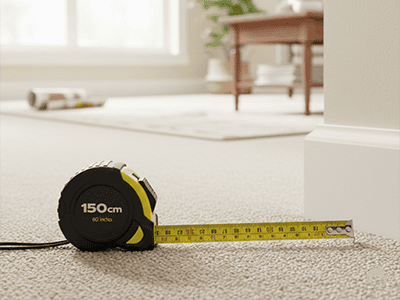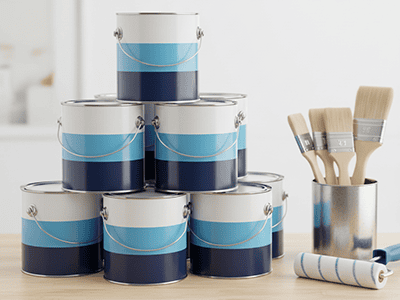How to Calculate How Much Paint You Need
A Simple Guide to Buying the Right Amount and Saving Money
There are two things every Aussie DIY painter wants to avoid: running out of paint halfway through a wall, or being left with litres of expensive, unused paint at the end. Getting the quantity right isn’t guesswork, it’s simple maths that will save you money, time, and a last-minute trip to Bunnings. Here’s how to work it out like a pro.
The Basic Formula Explained
Before you grab the tape measure, understand the principle. You need to find the total surface area to be painted (in square metres) and divide it by the paint’s coverage rate (square metres per litre). Then multiply by the number of coats. It’s that straightforward:
(Total Area ÷ Coverage Rate) × Number of Coats = Litres Needed
Step 1: Measure Your Walls

Use a tape measure to find the length of each wall in the room. Add them together to get the total perimeter. Then measure from the top of the skirting board to the ceiling. In most Australian homes, ceilings are around 2.4 metres high.
- Example: The room is 4 metres long and 5 metres wide.
- Perimeter: 4m + 5m + 4m + 5m = 18 metres.
- Wall Height: 2.4 metres.
- Total Wall Area: 18m × 2.4m = 43.2 square metres (sqm).
Step 2: Subtract Doors and Windows
Doors and windows reduce the total paintable area. A rough estimate is fine here, but don’t forget large windows or sliding doors if you have them.
- A standard internal door is about 2 sqm.
- An average window is about 1.5 sqm.
- Example: 43.2 sqm − 2 sqm (door) − 1.5 sqm (window) = 39.7 sqm of paintable wall.
Step 3: Check the Paint Can’s Coverage
Every can of paint, whether Dulux, Taubmans, or Haymes will list its coverage rate in square metres per litre. This figure depends on the surface type and condition. As a general guide:

- Smooth, previously painted walls: 12–16 sqm per litre.
- New, unsealed gyprock (plasterboard): 10–12 sqm per litre for the first primer or sealer coat.
- Rendered or textured walls: 8–10 sqm per litre.
Step 4: Do the Final Calculation
Now put it all together. Most walls will need two topcoats for an even, durable finish, though dark colours or ceilings might need a third.
- Example: You have 39.7 sqm to cover, with paint covering roughly 14 sqm per litre.
- Litres per Coat: 39.7 ÷ 14 = 2.84 litres.
- Total for Two Coats: 2.84 × 2 = 5.68 litres.
The Verdict: Round up to the nearest can size. In this case, you’d buy 6 litres. Australian paints usually come in 1L, 2L, 4L, 10L, and 15L cans, so a 4L and 2L combo would do nicely and leave a bit for touch-ups later.
Pro Tip from a Sydney Painter
If you’re painting the ceiling, simply multiply the room’s length by its width — no need to subtract windows or doors. While brand calculators (like those from Dulux) are handy, doing the maths yourself helps you understand exactly what you’re buying. And if you’d rather skip the measuring guesswork and the hard work, the team at DRJ Painting can do the whole job for you and supply the right amount of premium paint for a flawless finish every time.

